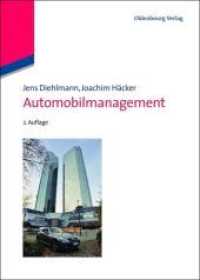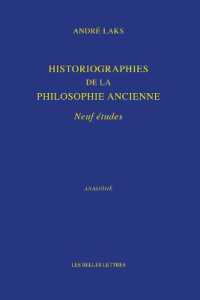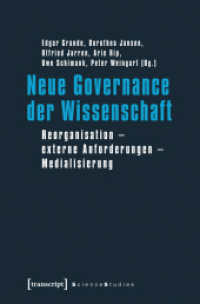Full Description
"Fills a niche for content teachers who teach reading strategies, particularly in light of the standards movement."
— Christene Alfonsi, Teacher, Fairfield High School, OH
"From a fairly concise book, teachers get an important overview about a 'system' approach to literacy. All teachers get specific tools and strategies and some very useful information that could change their paradigm along the way."
—Allyson Burnett, Instructional Interventionist, Alief Hastings High School, Houston, TX
Put a strong literacy system in place to improve student achievement!
In contrast to the primary grades when children are learning to read, students in grades 4 through 12 are expected to learn content as they read, yet they may still struggle with reading basics. Improving Reading, Writing, and Content Learning for Students in Grades 4-12 provides a realistic and systematic process for improving reading and writing while enhancing content knowledge and skills.
Based on proven evidence in multiple schools over a 10-year period, this excellent new resource presents specific strategies and successful examples that educators can immediately implement to improve day-to-day classroom success, while also boosting the success rate on standardized assessments. Aligned with the National Reading Panel Report, this book helps teachers focus on:
Creating a classroom community that is academically and psychologically safe for learning
Responding to non-negotiable expectations of daily practice
Building vocabulary, reading comprehension, and higher-order and critical thinking skills
Developing fluency in reading
Engaging families and the community
Teachers can create the best environment and instructional experience for all students to maximize literacy learning and standards-based achievement. This outstanding book will be a source of reflection for continuous improvement!
Contents
List of Figures
Preface
Acknowledgments
About the Authors
1. The Fail-Safe Classroom: Improving Reading, Writing, and Content Learning
Introduction
Academically and Psychologically Safe to Learn
Nonnegotiable Expectations of Daily Practice
Nonnegotiable Expectations of Daily Practice and Writing
Practical Tips for Creating Fail-Safe Classrooms for Literacy and Content
Learning
2. Reading Components for Grades 4--12
Phonemic Awareness
Phonics
Relationship of Nonnegotiables and Reading Components
Relevant and Respectful Literacy for Below-Grade-Level Readers
Reading Intervention and Phonemic Awareness
Technology Solutions
Audiobooks
Practical Tips for Phonics and Phonemic Awareness Support
3. Owning Vocabulary
Vocabulary Solvers
Vocabulary in Context
Word Questioning Target Word: Nylons
Textbook Vocabulary Lists
Word Walls
Personal Dictionary, Thesaurus, or Journal
Vocabulary Workbooks
Spelling and Writing
Practical Tips for Developing Student-Owned Vocabulary
4. Developing Fluency in Reading All Texts
What Is Fluency and Why Is It So Important?
Developing Fluency in Reading Intervention
Developing Fluency in Reading Content Texts
Accountable Independent Reading
Practical Tips for Developing Fluency
5. Owning Comprehension Strategies
Key Comprehension Strategies
Summarization
Teaching Strategies With Scaffolding
To What Extent Should Strategies Be Incorporated?
SMART Tasks
Graphic Organizers
Practical Tips for Owning Comprehension Strategies
6. Comprehending With Higher Levels of Thinking
Higher Levels of Thinking
Questioning Strategies
More Questioning Techniques
Higher Thinking With Graphic Organizers
Align Instructional Resources
Practical Tips for Higher-Level Thinking
7. Engaging Parents and Community in Literacy Learning
Engaging Parents
Educating Parents in Literacy Learning
Engaging the Community
Volunteers
Service Learning
Reflection on Improving Reading, Writing, and Content Learning
Practical Tips for Engaging Parents and Community in Literacy Learning
Resource A: Teacher Reflection Guide
Resource B: Accountable Independent Reading Log
Resource C: Book Talk Checklist
References
Index








